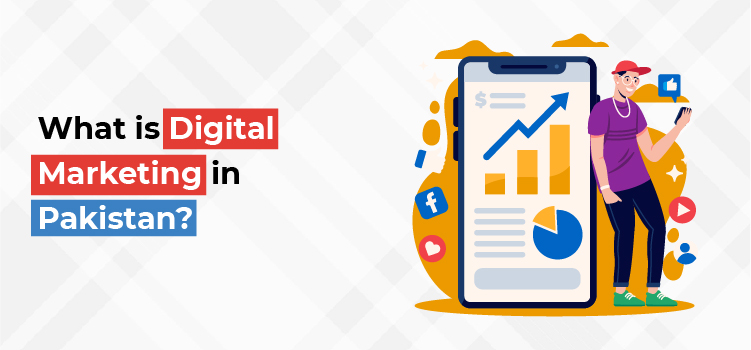Although the prime association of our brains with color development is bridged as one since it pops out the connectivity spectrum, we tend to see a lot of exceptional researches and theories determining the ways to make a perfect color selection. However, smart decisions can influence impulse behavior marking out the significance of color psychology when opting for colors in marketing and advertising. Colors, after all, capture customer attention and flourish effective engagement with the audience.
Though we all understand that every color has a spark for some certain kind of emotion, it’s also been scientifically proven that each color can develop a different emotion and persuade the human beings in an entirely different manner.
Well, did you know? That color red is mostly used by food and beverage brands as it makes the viewer famished. On the other hand, if you look at the color green; it showcases a pure environmental outlook that reciprocates well with herbal and organic brands.
Choosing ideal colors in marketing and advertising is a partially aesthetic decision, while the remaining ground is built on the basis of color psychology. Thus, to help you make a firm color choice and understand the significance of colors in marketing and advertising, I’ve put together this brief guide enlisting almost every important point.
Dive into Burst Your Curiosity!
Essentialism of Colors in Marketing and Advertising
Ideally, we know that colors speak a certain language of provocation. Therefore, the role of colors in marketing and advertising is huge that it leads them through the path to grab potential viewers who can be converted into effective purchasers.
Additionally, as per the color psychologists, “42% of consumers form their opinions based on the site’s designs and colors.” This contributes to the importance of color theory and its effectiveness a lot.
Moreover, if we have a glimpse of the pharma industry, they surely are manufacturing stuff with purposeful color selection. For instance, the sleeping pills are specifically outcasted in blue while the stimulants are deemed in shades of yellow. While, red is used as a symbol to highlight special effects.
No matter what industry you operate with, the essence of colors in marketing and advertising remains essential. According to color researchers, “90% of impulse decisions about products are based solely on the colors of the products.” This too signifies that colors evoke emotions to an extent that changes the mind of purchasers, and is a strong factor in converting audiences into clients.
How Colors in Marketing and Advertising Are Efficacious?
Colors enhance the design and patterns, as they influence the audience’s reactions with their particular association and eye-grabbing sparks. Moreover, colors play a significant role in the overall presentation of your brand. No matter how good of a strategy you’ve designed and the efforts you’ve been putting in for days and nights, all of that can go in vein if you’ve failed to incorporate the right colors into your design.
Therefore, many credible digital marketing services understand the incorporation of colors in marketing and advertising and can be a real fit for glazing your brands aesthetically. Furthermore, colors also bloom up the creativity within stationery and brand identity designs.
- Colors define what customers want;
- Colors enhance the visual sense of the buyers;
- Colors influence how customers think and feel regarding the products;
- Colors create links between the customers and the brands; and
- Colors meet customers’ expectations.
Best Situations to Use Primary Colors
At the end of the day our perceptions are rooted in colors; thus, we can only make generalizations on the scheme of color variations. As colors are differently presumed as discussed earlier. So, brands utilize colors in marketing and advertising on hypothetical market research.
According to recent retail reports, “93% of shoppers place visual appeal above smell, sound and texture when buying a product.” Well, this does happen, if the packaging and presentation of a certain thing look great, we really tend to hop on it.
You probably know that white is a color of peace and cleanliness, while color pink highlights femininity. Not only these but for bargainers, the colors in marketing and advertising are distinct such as navy blue and teal. While pink, sky blue and soft colors are used for clothing shoppers and bags.
Perhaps all colors are great and used widely but some colors need to be scrutinized.
For instance, brown, yellow, or pink colors in marketing and advertising for a bank are pathetic choices. While for feminine box wrappings or brand identity in brown and grey colors are the worst preferences.
Here you go with some primary colors and their impacts on marketing and advertising.
Yellow
Basically, yellow associates with energy and happiness. Along with highlighting optimism and warmth, it has the quality of having both light and bold shades. Some of the prime associations are:
- Danger – Caution wrote on Signboards
- Cheerfulness – Snapchat
- Energy – Shell
- High-spirited – National Geographic
- Youth – Ferrari
- Playfulness – McDonald’s
Red
The color red is used to boost viewers’ metabolism and grab attention with its bold and vibrant nature. Surely, a dating service would opt for hot red color as it seems to be sexy, passionate and intimidating. Some of the prime associations are:
- Passion – YouTube
- Danger – Emergency Cross
- Warmth – Air BNB
- Hunger – KFC
- Anger – Red Bull
- Strength – NASA
- Intimation – Rolling Stones
Green
As per the facts, “Most people view green color for lower blood pressure and heart rate.” Not just this, green also reminds people of organic and recycling factors. Therefore, a soothing, mature and professional feel can be nicely showcased with green. Some of the prime associations are:
- Health – Wholes Food Market
- Wealth – Fiver
- Renewal – John Deere
- Finances – Regions Financial Corporation
- Harmony – Animal Planet
- Soothing – Starbucks
Blue
There are many colors in marketing and advertising that go well to describe masculinity. Typically, blue is regarded as the most authentic color to symbolize “Masculinity” among many others. Moreover, it effectively communicates authority, value addition and stability. That’s why many banking and professional institutions opt blue as their identity. Some of the prime associations are:
- Tranquility – Yoga Brands
- Stability – Unilever
- Refreshing – Vaseline
- Trust Worthiness – Pay Pal
- Relaxation – Facebook
Colors Speak for You
To build up a brand perception that evokes emotional tantrums, colors hit a specific spot. Moreover, as reported by color researchers, “85% of shoppers place color as a primary reason for why they buy a particular product.” Thus, it explains that colors help a mind to interpret the environment that resonates with your purchasers. Therefore, choosing colors strategically is a fine means of attaining success in marketing and advertising.





